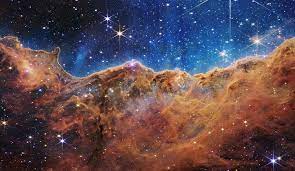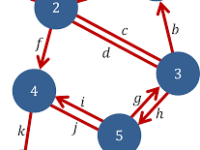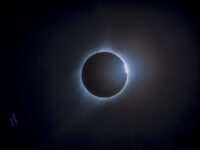There are few things as mysterious as the creation of the universe. Before humans knew just how big the universe was, they still wondered why and how they existed and what was beyond the expansive sky. Humans as a species have always been curious about their beginnings, and although there are still a lot of unanswered questions, many are now much better understood. Although not proven, the best supported theory of the universe’s creation is the Big Bang theory, which states that the universe originated from one singular point and kept expanding from there. Many have likely heard of this theory, but not as many may know why it is so widely accepted or who came up with it.
Georges Lemaître, a Belgian cosmologist who was fascinated by the universe, first proposed the Big Bang theory in 1927. He came up with this idea using Albert Einstein’s theory of general relativity, which stated that curvatures in spacetime explain gravity. Lemaître’s idea of the Big Bang was astounding, but it lacked proof and contradicted the common belief that the universe was static (neither expanding nor contracting).
By 1929, however, astronomer Edwin Hubble used spectroscopic redshift data to observe objects from further away than previously possible and discovered that light from objects further from Earth was more red-shifted than light from closer ones. Redshift refers to the change in the wave spectrum of an astronomical object toward red wavelengths, which arises when an object is in motion. An object’s redshift can be used to measure its distance, and Hubble used this to calculate the speed at which astronomical objects were traveling away from Earth. He found that those located further from Earth receded faster than closer objects, which is now known as Hubble’s law. He ultimately concluded that if the astronomical objects were moving away from each other, the universe could not be static. These observations supported Lemaître’s theory – if the universe was expanding, it must have been much smaller before. It then seemed possible that, at a point far enough back in time, all the matter in the universe was packed into a very dense state. With this, people began to accept the Big Bang theory.
Distinguished English astronomer Arthur Eddington, who studied theoretical physics, worked with Lemaître to craft the equation that proved the Big Bang theory. Their work was later compounded by other evidence found by Hubble that the objects he was studying were far beyond the Milky Way. This was the first time humans discovered structures that existed outside of the Milky Way. Later, he found that these objects were other galaxies. Using Hubble’s law, scientists calculated how long ago galaxies started moving apart and hence when the Big Bang occurred and ultimately determined it to be around 13.7 billion years ago.
The Big Bang is mysterious, and scientists today can only speculate what caused it. According to one opinion, there was no space or time present before the Big Bang so it is meaningless to ask what the cause of the Big Bang was. Quantum physics has shown that some things don’t have any cause at all, and it is possible that the creation of the universe and everything was created spontaneously, or randomly. This remains only a theory for now, though, until more evidence of how it formed can be found.
Similar to how the universe’s origin is unclear, there is also little known about how it will end. In the past, scientists thought that the universe could end in what is called the “big crunch.” In this scenario, if the universe has enough matter in it, gravity will overcome the expansion, forcing the universe to collapse in a large, fiery crunch. This scenario became less realistic after the discovery of dark energy, the force that is causing the universe to accelerate. It acts as a weak opposition to gravity, thus making the big crunch seem unlikely to occur since gravity will never overcome the inflating effect of dark energy; the universe will continue to expand until all star formation ceases and energy is evenly distributed.
“This will be a tumultuous journey ahead which will take many of the brightest minds on Earth to figure out.”
As it is abundantly clear, there is still a lot to figure out about the universe. This will be a tumultuous journey ahead which will take many of the brightest minds on Earth to figure out, but with increasing technological advancements and thus more discoveries, more and more of humanity’s oldest questions have the chance of being answered.
- Cosmic Horizons: Astronomy at the Cutting Edge (2001). ISBN: 978-1565846029






